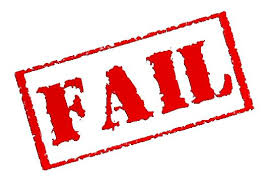by Charles Plant | Jan 29, 2014 | Leadership Development
 I’ve been having an interesting exchange with Olivier Compagne, one of the partners at Holacracy One. I wrote a post last week on the subject which was flippant to say the least and Olivier has been good enough to attempt to set me straight on Holacracy. Instead of just lambasting the concept, I thought I would attempt to examine it critically.
I’ve been having an interesting exchange with Olivier Compagne, one of the partners at Holacracy One. I wrote a post last week on the subject which was flippant to say the least and Olivier has been good enough to attempt to set me straight on Holacracy. Instead of just lambasting the concept, I thought I would attempt to examine it critically.
Let’s look first at what Holacracy claims to be:
- There are no titles and no managers.
- Teams are organized around the work, not the people.
- Employees fill many roles in many teams simultaneously.
- Governance meetings structure how the work gets done.
I found this structure quite familiar as from 1979 to 1982 I worked in what is probably quite close to a Holacracy. I was at Thorne Riddell (KPMG) as a Chartered Accountant. We had no titles on business cards and work was organized around audits on which you may be on a number at a time. Your role in each audit depended on the nature and complexity of the audit so you may have had different roles to play at any one time.
This may be a great structure for a project based organization like KPMG but I’m not sure that the same could be said of a non-project based organization such as Zappos. Even though it may work in project based organizations, there were a number of problems with this structure, even at KPMG:
- Working on multiple projects simultaneously meant a fight for resources and at times individuals could be pulled too many ways and end up working ridiculous hours.
- Each project had different expectations and each team had a different culture so what worked with one project may not have not work with another.
- There was no relationship with a “Coach” who could give guidance on career development as we had no one boss.
- Getting feedback on performance in a formal way was project based and didn’t translate to career performance discussions as no one could see the whole picture of your performance.
Strategy execution is one of the biggest problems in business today. In order to implement strategy in an effective manner, each employee must know:
- Exactly what is expected.
- How they are doing.
- How they can improve.
- How they have done.
The problem with Holacracy as I see it is that it just isn’t that easy to execute effectively with such a convoluted non-structure.
- If people work on multiple projects simultaneously without one central boss, it will be very complex to set clear objectives and direction
- Without that one decision maker, the resolution of resource and performance conflicts will be very difficult.
- Individual coaching by someone who knows your work intimately is also very complex.
- Finally, finding out how you’ve done when you’ve worked on multiple teams would be complex and confusing.
Growing revenue and making profits is hard enough as it is, without Holacracy. While I don’t support Bureaucracy, I don’t think Holacracy adds to our ability to execute strategy effectively and for that reason, I’m out.
by Charles Plant | Jan 24, 2014 | Leadership Development
 Every now and then you hear of a new management technique that makes you ask – what are they thinking? For me the latest is Holacracy. “Developed by a former software entrepreneur, the idea is to replace the traditional corporate chain of command with a series of overlapping, self-governing “circles.” In theory, this gives employees more of a voice in the way the company is run.”
Every now and then you hear of a new management technique that makes you ask – what are they thinking? For me the latest is Holacracy. “Developed by a former software entrepreneur, the idea is to replace the traditional corporate chain of command with a series of overlapping, self-governing “circles.” In theory, this gives employees more of a voice in the way the company is run.”
As if matrix management isn’t enough, instead of nice tight little grids, we replace lines with circles. I sometimes think people are looking at geometric shapes and wondering how they can build a management philosophy around them. And the worst part is that Zappos has decided that this is the way they’re going to run their company.
When you read descriptions about Holacracy it sort of makes sense which is why I guess that companies would give it a try. Work is organized around what needs to be done instead of around people. People work in multiple circles for different functions. Decision making is integrative. (This must be a new douchebag term I have missed – integrative decision making.)
The big thing about Holacracy is no management. Huh, what’s that? No management? Sounds perfect. Where can I sign up?
OMG, I’m trying to remain open minded but business is hard enough with bad managers. Getting rid of them altogether would be a real trip.
The only great thing Holacracy it is that it will earn a lot of money for the consultants who will help implement it and for the other ones that will help a company recover from it.
Since the idea of running businesses with overlapping circles instead of lines is taken, I think I’ll spend the weekend developing a management theory that uses triangles as a way for organizing work.
by Charles Plant | Jan 22, 2014 | Leadership Development
 OK, just one more day on this subject. Pinkie swear. I can’t resist the topic because I’m trying so hard to develop leadership development and management development programs that actually work, not ones that fail. And I must admit that I haven’t cracked the code for success yet either.
OK, just one more day on this subject. Pinkie swear. I can’t resist the topic because I’m trying so hard to develop leadership development and management development programs that actually work, not ones that fail. And I must admit that I haven’t cracked the code for success yet either.
So if you’ve been paying attention to the last two days, I’ve been commenting on the McKinsey article on Why Leadership Development Programs Fail.
The biggest problem I’ve found and that is not mentioned in the article, is that most leadership development programs don’t have a concrete measurable objective. While the article mentions measurement as an issue (and this is a dirty secret of the training industry) it doesn’t go far enough.
If you don’t have a measurable objective, how will you know whether or not you’ve succeeded?
So setting out to implement a leadership development program is a waste of time and money if you can’t describe your objective.
Improve leadership? What kind of namby-pamby motherhood objective is that? We can’t even define what leadership is, let alone agree on how to improve it. And if we can’t even define it, and everyone does it differently, how can we measure it?
What we can do is define management skills (as opposed to leadership skills) as these are functional logical skills that can be measured. These we can set concrete objectives for improving that measure quality, cost, and speed.
So then how do we make sure people are learning leadership behaviours. Well, we expose them to good leaders, good mentors, good coaches. We let them try things out and we let them talk with their peers. This isn’t a classroom program and this is the fundamental problem with leadership development programs, we’re doing it entirely the wrong way.
by Charles Plant | Jan 21, 2014 | Leadership Development
 I promise that this isn’t a rant that I’m on this week. It’s just that I haven’t finished with McKinsey Quarterly’s article on Why Leadership Development Programs Fail. If it turns into a rant I know you’ll tell me.
I promise that this isn’t a rant that I’m on this week. It’s just that I haven’t finished with McKinsey Quarterly’s article on Why Leadership Development Programs Fail. If it turns into a rant I know you’ll tell me.
Another surprise I had on the list of reasons that programs fail is that there is a difficulty of changing mindsets. This is something I hadn’t thought out fully although Mike Tobias of Mercanix has been bending my ear on the subject for several months.
I’m not sure about whether this is silly or not to put on the list. After all, changing mindsets is the purpose of leadership development programs. If you don’t change leadership mindsets then what are you doing?
To say that these programs fail because it is hard to change mindsets, is the same as saying that people fail at math because it is hard. That’s why the training is there in the first case. If changing mindsets was easy then people would do it just cuz someone said so.
The thing is, I don’t think that the purpose of training should be to change mindsets. It should be to make people aware of other ways of thinking and to give them an opportunity to change if they so desire. Training can change skills but changing behaviour doesn’t work that way.
Perhaps that’s why leadership development programs are problematic to begin with.
If this blog seems confusing then I’m not surprised. I’m trying to attack this issue of changing mindsets and I’ve got myself into one of those circuitous agruments that can be tormenting. If I manage to unconfuse myself, I’ll let you know.
by Charles Plant | Jan 20, 2014 | Leadership Development
 McKinsey Quarterly has another good article on Why Leadership Development Programs Fail. Essentially, their proposition is that these programs fail due to:
McKinsey Quarterly has another good article on Why Leadership Development Programs Fail. Essentially, their proposition is that these programs fail due to:
- Poor context setting.
- Decoupling programs from real work.
- The difficulty of changing mindsets.
- Failing to measure results.
I’ve blogged about several of these issues, particularly to problem of not integrating programs with work and failing to measure results. The other two are interesting issues though and deserve some examination.
In terms of context setting though, I was surprised to see this one in the list. The article states that “A brilliant leader in one situation does not necessarily perform well in another.” I suppose the author is a believer in Situational and Contingency theories of Leadership.
I guess the reason I was surprised is that different contexts may not require different leadership skills but would definitely require different management skills. I think the difference between these two is important. If management is about logic and leadership is about emotion, then different contexts require different management skills, not different leadership skills.
The problem then is that we are teaching people how to lead instead of how to manage. If leadership is a behaviour that is hard to change but management skills are easier to acquire then trying to improve leadership is very much a problem when what you should be improving is management.
by Charles Plant | Jan 10, 2014 | Leadership Development
 As long as we’re on the subject of truth-telling, we should give a little attention to those among us who are regular liars. I’ve run into a few at work who consistently lie and never admit that they have. But those of us who work with them know them to be consistent liars.
As long as we’re on the subject of truth-telling, we should give a little attention to those among us who are regular liars. I’ve run into a few at work who consistently lie and never admit that they have. But those of us who work with them know them to be consistent liars.
I’m never sure whether these liars just don’t see that they’re lying, whether they have distorted reality to such an extent as to think they are telling the truth. Or do they know that they are lying and figure they won’t be challenged.
I suspect that liars really don’t recognize that they are lying. I think that they twist reality to their own devices and go with it. Or maybe they have bad memory and so they “remember” things in a way as to fit the future situation.
Thing is, nobody gets called out for lying. Since the things that most people lie about are subject to interpretation the liar is seldom challenged and more reasonable people are willing to let the situation drop instead of challenging the liar.
Thus without a challenge, the liar goes on lying and probably frequently benefits from having done so.
 I’ve been having an interesting exchange with Olivier Compagne, one of the partners at Holacracy One. I wrote a post last week on the subject which was flippant to say the least and Olivier has been good enough to attempt to set me straight on Holacracy. Instead of just lambasting the concept, I thought I would attempt to examine it critically.
I’ve been having an interesting exchange with Olivier Compagne, one of the partners at Holacracy One. I wrote a post last week on the subject which was flippant to say the least and Olivier has been good enough to attempt to set me straight on Holacracy. Instead of just lambasting the concept, I thought I would attempt to examine it critically.




